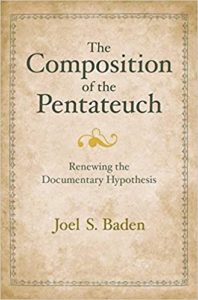Toda descoberta arqueológica em Jerusalém gera controvérsias. Esta também.
:: Earliest Archaeological Evidence of the Existence of the City of Bethlehem already in the First Temple Period (May 2012) – IAA
The first ancient artifact constituting tangible evidence of the existence of the city of Bethlehem, which is mentioned in the Bible, was recently discovered in Jerusalem.
A bulla measuring c. 1.5 cm was found during the sifting of soil removed from archaeological excavations the Israel Antiquities Authority is carrying out in the City of David. The sifting is underwritten by the ‘Ir David Foundation’ in a project being conducted in the Emek Tzurim National Park.
A bulla is a piece of clay that was used for sealing a document or object. The bulla was impressed with the seal of the person who sent the document or object, and its integrity was evidence the document or object was not opened by anyone unauthorized to do so.
Three lines of ancient Hebrew script appear on the bulla:
בשבעת Bishv’at
בת לחם Bat Lechem
[למל]ך [Lemel]ekh
According to Eli Shukron, director of the excavation on behalf of the Israel Antiquities Authority, “it seems that in the seventh year of the reign of a king (it is unclear if the king referred to here is Hezekiah, Manasseh or Josiah), a shipment was dispatched from Bethlehem to the king in Jerusalem. The bulla we found belongs to the group of “fiscal” bullae – administrative bullae used to seal tax shipments remitted to the taxation system of the Kingdom of Judah in the late eighth and seventh centuries BCE. The tax could have been paid in the form of silver or agricultural produce such as wine or wheat”. Shukron emphasizes,” this is the first time the name Bethlehem appears outside the Bible, in an inscription from the First Temple period, which proves that Bethlehem was indeed a city in the Kingdom of Judah, and possibly also in earlier periods”.
In the Bible Bethlehem is first mentioned in the verse “in Ephrath, which is Bethlehem”, and it was on the way there that Rachel died and it is where she was buried (Genesis 35:19; 48:7). The descendants of Judah settled there, among them the family of Boaz (Book of Ruth).
More on the so-called ‘Bethlehem’ Bulla – George Athas: 25/05/2012
Since the original announcement by the Israel Antiquities Authority, there has been a flurry of discussion about the new bulla which, it is claimed, refers to Bethlehem. In my previous blog article, I mentioned that the photograph accompanying the announcement didn’t seem to allow for a reference to Bethlehem. At the same time, however, I mentioned that photographs of inscriptions like these can distort critical features. Hence, I called for some extra eyes to take a look at the bulla and let us know what they see.
Today comes news (via an email from Joseph Lauer) that Shmuel Ahituv (Ben Gurion University) inspected the bulla and in the second register he reads the following letters:
[…]יתלח[…]
According to Ahituv, the first fragmentary letter is not a ב (b), as originally reported by Eli Shukron, but a י (y). Furthermore, he claims that though they are slight there are traces of a left vertical stroke on the final extant letter, yielded a ח (ḥ) rather than ה (h). Accordingly, he concludes that the second register does indeed refer to Bethlehem (ביתלחם).
Ahituv is a trusty epigrapher. He’s the author of the Carta Handbook, Echoes from the Past: Hebrew and Cognate Inscriptions from the Biblical Period, and he knows his stuff. It’s good to see that we have an actual epigrapher looking at the bulla. One wonders why his opinion was not included prominently in the IAA’s original announcement. I’m more than happy to retract my preliminary conclusion on the bulla, but before doing so, I’d like to hear from one or two other epigraphers who can inspect the bulla itself. Chris Rollston, you’re up!
This raises the issue of the way epigraphic finds are announced. It would seem sound practice to employ two independent epigraphers and have their opinions accompany any such announcement. This is especially vital when the published photograph seems to speak against the announcement.
Drawing of the ‘Bethlehem’ Bulla – George Athas: 29/05/2012
There is a facsimile drawing of the so-called ‘Bethlehem’ bulla now available. It has been produced by Pnina Arad.
According to the drawing, the first register contains a triangular-shaped ʿayin (ע) and the lower fragment of a taw (ת), yielding the word בשבעת (bšbʿt), meaning ‘in the seventh (year)’. The second register has the leftmost portions of a yodh (י) as the first extant letter. The fourth visible letter has been drawn as a ḥeth (ח), though apparently the vertical stroke in the top left has been broken off. The proposed reading is ביתלחם (bytlḥm), referring to the toponym Bethlehem. The third register has only one extant letter, but on the basis of other fiscal bullae, has been reconstructed as למלך (lmlk), meaning ‘for the king’.
So it looks like the bulla probably does refer to Bethlehem after all. Nevertheless, a personal inspection by another epigrapher (in addition to Shmuel Ahituv) would still be good to double-check.
